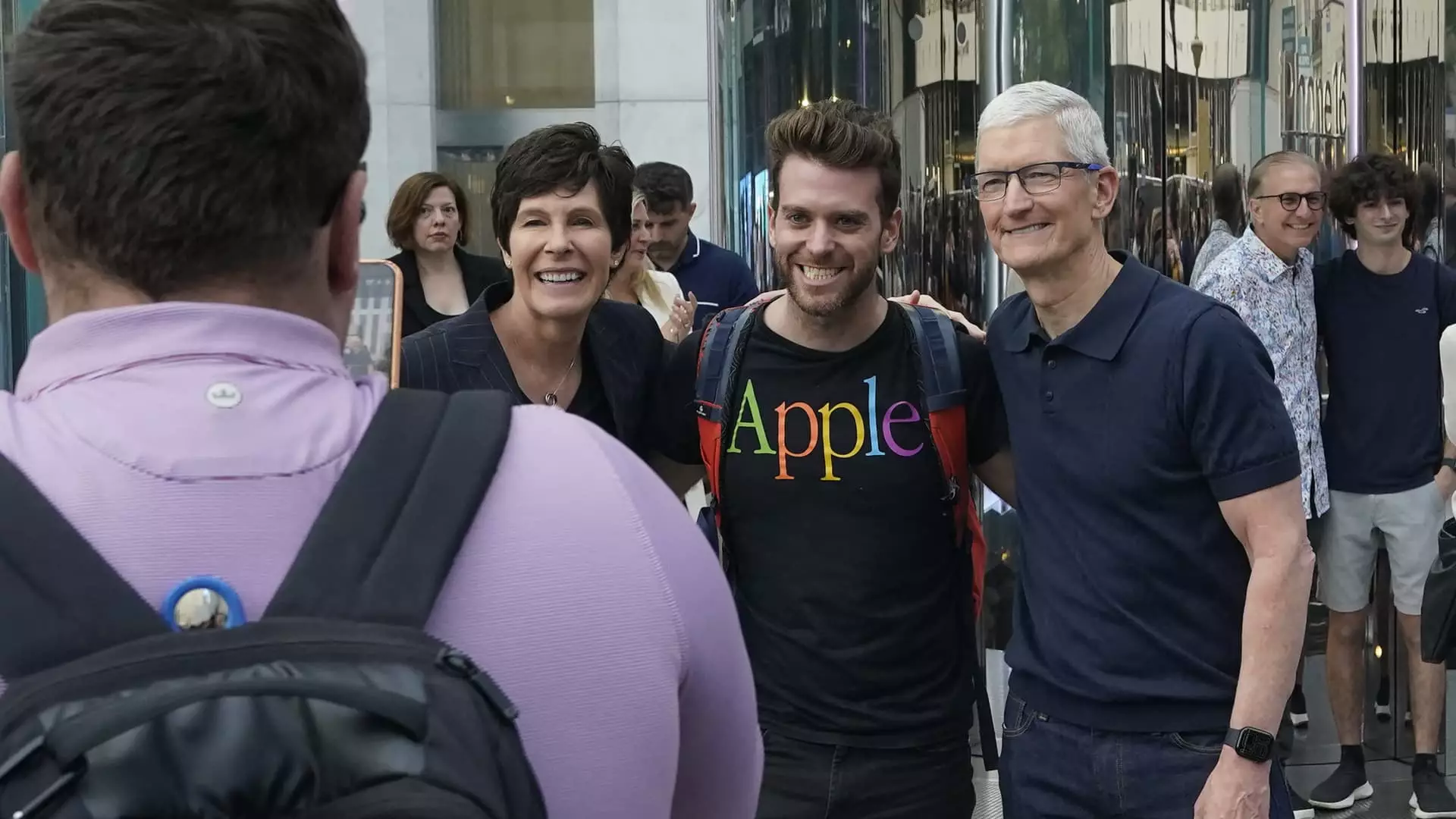The recent product launch by Apple has sparked a blend of excitement and skepticism among consumers and investors alike. With the release of the iPhone 16, Apple Watch Series 10, and AirPods 4, Apple aimed to reinforce its position as a leader in technology. However, early indications suggest that demand may not be meeting expectations, raising questions about this iconic brand’s ability to captivate customers in an increasingly competitive market.
Apple’s latest lineup, debuted in a grand ceremony, incorporates several advancements intended to enhance user experience. The iPhone 16 stands out with its upgraded artificial intelligence capabilities, branded as Apple Intelligence, which claims to revamp functions like text rewriting and object removal in photos. Furthermore, the new Siri feature, designed to provide a more interactive experience, is anticipated to light up the edges of the device’s display, showcasing the seamless integration of hardware and software. While these innovations are noteworthy, analysts are already questioning whether these enhancements will lead to the robust sales that Apple is accustomed to.
The Apple Watch Series 10 promises to expand its utility with a larger screen and new health monitoring features, including Sleep Apnea detection. Together with the revamped AirPods 4, which include a more compact charging case and noise cancellation capabilities, Apple is, at least in their marketing, addressing both lifestyle and technological needs of modern consumers. These developments reflect Apple’s ongoing commitment to health and wellness while integrating cutting-edge technology for everyday use.
Sales Performance and Market Sentiment
Despite the innovative features and grand expectations set forth by the company, early sales figures paint a different picture. Reports indicated that first-weekend sales of the iPhone 16 were down approximately 12% compared to the iPhone 15 from the previous year. The tepid start is concerning, especially as investment analysts from firms such as TF Securities, Barclays, JPMorgan, and Bank of America expressed caution regarding demand for the higher-end iPhone Pro models.
CEO Tim Cook’s remarks, given outside the flagship Fifth Avenue store, showed a blend of optimism and uncertainty: “I don’t know yet. It’s only the first hour, so we’ll see,” he stated, hinting at the unpredictability of initial sales performance. The first few days following a launch are traditionally viewed as critical indicators of overall consumer interest and market reception. This year, however, analysts advise against overreacting to potentially misleading indicators, such as shipping times, which were extended last year due to supply chain disruptions.
Understanding Consumer Trends
As data begins to trickle in, UBS analysts have urged a nuanced understanding of consumer behavior. They pointed out that the comparative analysis with last year’s launch might not fully capture the current market landscape, given that prolonged wait times for earlier models were influenced heavily by supply issues. Last year, customers for the iPhone 15 Pro Max experienced a staggering 41-day wait time for pre-orders, while the iPhone 16 Pro Max only sees a 26-day wait, reflecting less demand or improved supply chain efficiencies.
In an era dominated by rapid technological advancements and ever-evolving consumer preferences, the introduction of new features must resonate as revolutionary rather than merely evolutionary. Analysts suggest that the lack of a compelling “killer app” in Apple’s new offerings might hinder consumer enthusiasm. This hesitation is particularly relevant in markets like the U.S. and China, where, according to the analysts’ reports, early demand is lukewarm compared to last year’s launch.
Ultimately, Apple’s challenge lies not just in innovating but in effectively communicating the value of these innovations to an audience that is adjusting to a landscape increasingly filled with alternatives. The tech giant must navigate these nuanced consumer expectations while addressing concerns reflected in the initial sales data. As the month progresses and the artificial intelligence features roll out, it will be critical for Apple to engage and adapt its offerings based on real-time consumer feedback.
With anticipation surrounding Apple’s new product line, the company stands at a crossroads, needing to translate its technological advancements into tangible consumer interest and satisfaction. As the technology market evolves, so too must Apple adapt to maintain its legacy of innovation and consumer loyalty, ensuring that the introduction of new products can still generate the excitement and demand that has traditionally characterized the iconic brand.

Leave a Reply